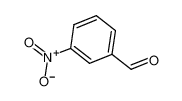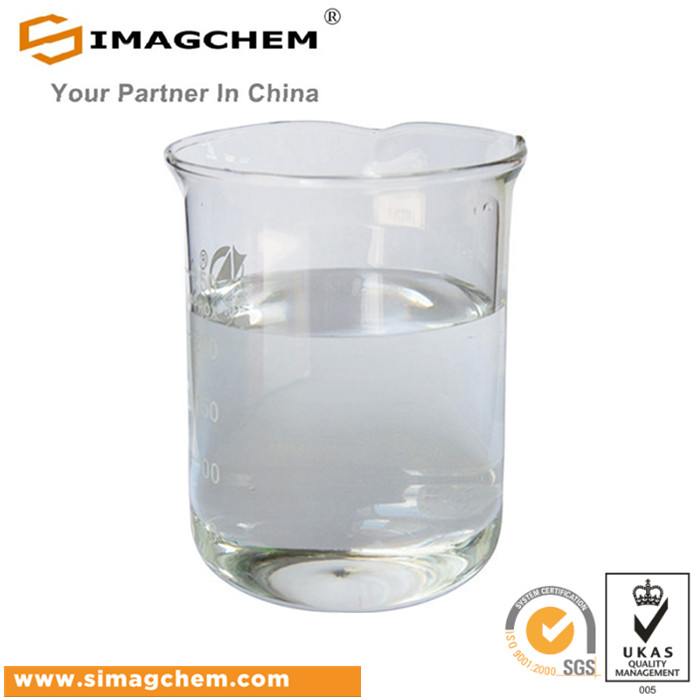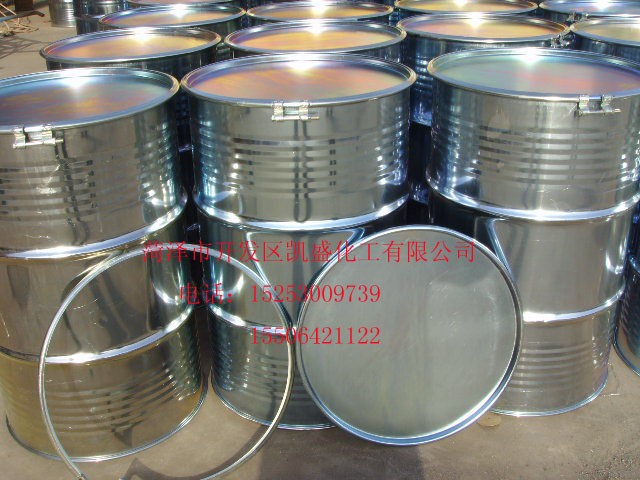1.Identification
1.1 GHS Product identifier
| Product name | m-Toluidine |
|---|
1.2 Other means of identification
| Product number | - |
|---|---|
| Other names | 3-Toluidine |
1.3 Recommended use of the chemical and restrictions on use
| Identified uses | For industry use only. Intermediates |
|---|---|
| Uses advised against | no data available |
1.4 Supplier's details
| Company | MOLBASE (Shanghai) Biotechnology Co., Ltd. |
|---|---|
| Address | Floor 4 & 5, Building 12, No. 1001 North Qinzhou Road, Xuhui District, Shanghai, China |
| Telephone | +86(21)64956998 |
| Fax | +86(21)54365166 |
1.5 Emergency phone number
| Emergency phone number | +86-400-6021-666 |
|---|---|
| Service hours | Monday to Friday, 9am-5pm (Standard time zone: UTC/GMT +8 hours). |
2.Hazard identification
2.1 Classification of the substance or mixture
Acute toxicity - Oral, Category 3
Acute toxicity - Dermal, Category 3
Acute toxicity - Inhalation, Category 3
Specific target organ toxicity – repeated exposure, Category 2
Hazardous to the aquatic environment, short-term (Acute) - Category Acute 1
2.2 GHS label elements, including precautionary statements
| Pictogram(s) |    |
|---|---|
| Signal word | Danger |
| Hazard statement(s) | H301 Toxic if swallowed H311 Toxic in contact with skin H331 Toxic if inhaled H373 May cause damage to organs through prolonged or repeated exposure H400 Very toxic to aquatic life |
| Precautionary statement(s) | |
| Prevention | P264 Wash ... thoroughly after handling. P270 Do not eat, drink or smoke when using this product. P280 Wear protective gloves/protective clothing/eye protection/face protection. P261 Avoid breathing dust/fume/gas/mist/vapours/spray. P271 Use only outdoors or in a well-ventilated area. P260 Do not breathe dust/fume/gas/mist/vapours/spray. P273 Avoid release to the environment. |
| Response | P301+P310 IF SWALLOWED: Immediately call a POISON CENTER/doctor/… P321 Specific treatment (see ... on this label). P330 Rinse mouth. P302+P352 IF ON SKIN: Wash with plenty of water/... P312 Call a POISON CENTER/doctor/…if you feel unwell. P361+P364 Take off immediately all contaminated clothing and wash it before reuse. P304+P340 IF INHALED: Remove person to fresh air and keep comfortable for breathing. P311 Call a POISON CENTER/doctor/… P314 Get medical advice/attention if you feel unwell. P391 Collect spillage. |
| Storage | P405 Store locked up. P403+P233 Store in a well-ventilated place. Keep container tightly closed. |
| Disposal | P501 Dispose of contents/container to ... |
2.3 Other hazards which do not result in classification
none
3.Composition/information on ingredients
3.1 Substances
| Chemical name | Common names and synonyms | CAS number | EC number | Concentration |
|---|---|---|---|---|
| m-Toluidine | m-Toluidine | 108-44-1 | none | 100% |
4.First-aid measures
4.1 Description of necessary first-aid measures
General advice
Consult a physician. Show this safety data sheet to the doctor in attendance.
If inhaled
Fresh air, rest. Artificial respiration may be needed. Refer immediately for medical attention.
In case of skin contact
Remove contaminated clothes. Rinse and then wash skin with water and soap. Refer immediately for medical attention.
In case of eye contact
Rinse with plenty of water (remove contact lenses if easily possible). Refer immediately for medical attention.
If swallowed
Rinse mouth. Refer immediately for medical attention.
4.2 Most important symptoms/effects, acute and delayed
Absorption of toxic quantities by any route causes cyanosis (blue discoloroation of lips, nails, skin); nausea, vomiting, and coma may follow. Repeated inhalation of low concentrations may cause pallor, low-grade secondary anemia, fatigability, and loss of appetite. Contact with eyes causes irritation. (USCG, 1999)
4.3 Indication of immediate medical attention and special treatment needed, if necessary
Immediate first aid: Ensure that adequate decontamination has been carried out. If patient is not breathing, start artificial respiration, preferably with a demand-valve resuscitator, bag-valve-mask device, or pocket mask, as trained. Perform CPR as necessary. Immediately flush contaminated eyes with gently flowing water. Do not induce vomiting. If vomiting occurs, lean patient forward or place on left side (head-down position, if possible) to maintain an open airway and prevent aspiration. Keep patient quiet and maintain normal body temperature. Obtain medical attention. /Aniline and related compounds/
5.Fire-fighting measures
5.1 Extinguishing media
Suitable extinguishing media
To fight fire, use foam, carbon dioxide, dry chemical.
5.2 Specific hazards arising from the chemical
Special Hazards of Combustion Products: Toxic oxides of nitrogen and flammable vapors may form in fire. (USCG, 1999)
5.3 Special protective actions for fire-fighters
Wear self-contained breathing apparatus for firefighting if necessary.
6.Accidental release measures
6.1 Personal precautions, protective equipment and emergency procedures
Use personal protective equipment. Avoid dust formation. Avoid breathing vapours, mist or gas. Ensure adequate ventilation. Evacuate personnel to safe areas. Avoid breathing dust. For personal protection see section 8.
6.2 Environmental precautions
Personal protection: complete protective clothing including self-contained breathing apparatus. Do NOT let this chemical enter the environment. Collect leaking liquid in sealable containers. Absorb remaining liquid in sand or inert absorbent. Then store and dispose of according to local regulations.
6.3 Methods and materials for containment and cleaning up
Collect leaking and spilled liquid in sealable containers as far as possible. Absorb remaining liquid in sand or inert absorbent and remove to safe place.
7.Handling and storage
7.1 Precautions for safe handling
Avoid contact with skin and eyes. Avoid formation of dust and aerosols. Avoid exposure - obtain special instructions before use.Provide appropriate exhaust ventilation at places where dust is formed. For precautions see section 2.2.
7.2 Conditions for safe storage, including any incompatibilities
Provision to contain effluent from fire extinguishing. Separated from strong oxidants, strong acids and food and feedstuffs. Well closed. Ventilation along the floor. Keep in the dark. Store in an area without drain or sewer access./Store/ separated from strong oxidants, strong acids, food and feedstuffs. Cool. Dry. Well closed. Ventilation along the floor.
8.Exposure controls/personal protection
8.1 Control parameters
Occupational Exposure limit values
NIOSH questioned whether the PEL proposed for m-toluidine [TWA 2 ppm (skin)] was adequate to protect workers from recognized health hazards.
Biological limit values
no data available
8.2 Appropriate engineering controls
Handle in accordance with good industrial hygiene and safety practice. Wash hands before breaks and at the end of workday.
8.3 Individual protection measures, such as personal protective equipment (PPE)
Eye/face protection
Safety glasses with side-shields conforming to EN166. Use equipment for eye protection tested and approved under appropriate government standards such as NIOSH (US) or EN 166(EU).
Skin protection
Wear impervious clothing. The type of protective equipment must be selected according to the concentration and amount of the dangerous substance at the specific workplace. Handle with gloves. Gloves must be inspected prior to use. Use proper glove removal technique(without touching glove's outer surface) to avoid skin contact with this product. Dispose of contaminated gloves after use in accordance with applicable laws and good laboratory practices. Wash and dry hands. The selected protective gloves have to satisfy the specifications of EU Directive 89/686/EEC and the standard EN 374 derived from it.
Respiratory protection
Wear dust mask when handling large quantities.
Thermal hazards
no data available
9.Physical and chemical properties
| Physical state | Colorless oily liquid |
|---|---|
| Colour | Colorless to light yellow liquid |
| Odour | Aromatic, amine-like odor |
| Melting point/ freezing point | -30ºC |
| Boiling point or initial boiling point and boiling range | 203-204ºC |
| Flammability | Class IIIA Combustible Liquid: Fl.P. at or above 60°C and below 93.33°C.Combustible. Gives off irritating or toxic fumes (or gases) in a fire. |
| Lower and upper explosion limit / flammability limit | no data available |
| Flash point | 86ºC |
| Auto-ignition temperature | 481.67°C (USCG, 1999) |
| Decomposition temperature | no data available |
| pH | no data available |
| Kinematic viscosity | 3.306 mPa-sec at 25°C |
| Solubility | In water:0.2 g/100 mL (20 ºC) |
| Partition coefficient n-octanol/water (log value) | log Kow = 1.40 |
| Vapour pressure | 0.278mmHg at 25°C |
| Density and/or relative density | 0.989 |
| Relative vapour density | 3.90 (Air = 1) |
| Particle characteristics | no data available |
10.Stability and reactivity
10.1 Reactivity
no data available
10.2 Chemical stability
Stable under recommended storage conditions.
10.3 Possibility of hazardous reactions
Flammable when exposed to heat or flame.As a result of flow, agitation, etc., electrostatic charges can be generated.M-TOLUIDINE neutralizes acids in exothermic reactions to form salts plus water. May be incompatible with isocyanates, halogenated organics, peroxides, phenols (acidic), epoxides, anhydrides, and acid halides. May generate hydrogen, a flammable gas, in combination with strong reducing agents such as hydrides. Can react vigorously with oxidizing reagents. Emits toxic fumes of oxides of nitrogen when heated to decomposition [Lewis, 3rd ed., 1993, p. 1253].
10.4 Conditions to avoid
no data available
10.5 Incompatible materials
Can react vigorously on contact with oxidizing materials.
10.6 Hazardous decomposition products
When heated to decomposition it emits highly toxic fumes of /nitroxides/.
11.Toxicological information
Acute toxicity
- Oral: LD50 Rat oral 450 mg/kg
- Inhalation: no data available
- Dermal: no data available
Skin corrosion/irritation
no data available
Serious eye damage/irritation
no data available
Respiratory or skin sensitization
no data available
Germ cell mutagenicity
no data available
Carcinogenicity
A4; Not classifiable as a human carcinogen.
Reproductive toxicity
no data available
STOT-single exposure
no data available
STOT-repeated exposure
no data available
Aspiration hazard
no data available
12.Ecological information
12.1 Toxicity
- Toxicity to fish: no data available
- Toxicity to daphnia and other aquatic invertebrates: LC50; Species: Daphnia magna (water flea); Conditions: static; Concentration: 0.73 mg/L for 24 hr
- Toxicity to algae: no data available
- Toxicity to microorganisms: no data available
12.2 Persistence and degradability
AEROBIC: 3-Aminotoluene, present at 100 mg/L, reached 0% of its theoretical BOD in 4 weeks using an activated sludge inoculum at 30 mg/L in the Japanese MITI test(1). In other screening tests, 3-aminotoluene was found to be readily biodegradable(2-4). In one test, 74% of theoretical BOD was achieved in 7.5 days with an activated sludge inoculum acclimated to aniline(2). In another, 97.7% degradation occurred in 5 days with an activated sludge inoculum(3). Complete degradation of 3-aminotoluene was obtained within 8 days with a soil inoculum(4). The half-life of 3-aminotoluene in natural water from ponds and rivers in which the microbial populations were increased 10- to 100-fold by filtration and nutrient addition was 4 hours(5). 3-Aminotoluene, present at 2 mg/L, reached 50% of its theoretical BOD in 5 days using water from the Songhua River in China as an inoculum(6).
12.3 Bioaccumulative potential
An estimated BCF of 3.9 was calculated for 3-aminotoluene(SRC), using a log Kow of 1.40(1) and a regression-derived equation(2). According to a classification scheme(3), this BCF suggests the potential for bioconcentration in aquatic organisms is low(SRC).
12.4 Mobility in soil
The mean Koc of 3-aminotoluene in 4 silt loam soils was 44 over a pH range of 6.1 to 7.5(1). According to a classification scheme(2), this Koc value suggests that 3-aminotoluene is expected to have very high mobility in soil. The pKa of 3-aminotoluene is 4.69(3), indicating that this compound will partially exist in cation form in the environment and cations generally adsorb more strongly to soils containing organic carbon and clay than their neutral counterparts(4). Aromatic amines are expected to bind strongly to humus or organic matter in soils due to the high reactivity of the aromatic amino group(5,6), suggesting that mobility of the neutral species may be much lower in some soils(SRC).
12.5 Other adverse effects
no data available
13.Disposal considerations
13.1 Disposal methods
Product
The material can be disposed of by removal to a licensed chemical destruction plant or by controlled incineration with flue gas scrubbing. Do not contaminate water, foodstuffs, feed or seed by storage or disposal. Do not discharge to sewer systems.
Contaminated packaging
Containers can be triply rinsed (or equivalent) and offered for recycling or reconditioning. Alternatively, the packaging can be punctured to make it unusable for other purposes and then be disposed of in a sanitary landfill. Controlled incineration with flue gas scrubbing is possible for combustible packaging materials.
14.Transport information
14.1 UN Number
| ADR/RID: UN1708 | IMDG: UN1708 | IATA: UN1708 |
14.2 UN Proper Shipping Name
| ADR/RID: TOLUIDINES, LIQUID |
| IMDG: TOLUIDINES, LIQUID |
| IATA: TOLUIDINES, LIQUID |
14.3 Transport hazard class(es)
| ADR/RID: 6.1 | IMDG: 6.1 | IATA: 6.1 |
14.4 Packing group, if applicable
| ADR/RID: II | IMDG: II | IATA: II |
14.5 Environmental hazards
| ADR/RID: yes | IMDG: yes | IATA: yes |
14.6 Special precautions for user
no data available
14.7 Transport in bulk according to Annex II of MARPOL 73/78 and the IBC Code
no data available
15.Regulatory information
15.1 Safety, health and environmental regulations specific for the product in question
| Chemical name | Common names and synonyms | CAS number | EC number |
|---|---|---|---|
| m-Toluidine | m-Toluidine | 108-44-1 | none |
| European Inventory of Existing Commercial Chemical Substances (EINECS) | Listed. | ||
| EC Inventory | Listed. | ||
| United States Toxic Substances Control Act (TSCA) Inventory | Listed. | ||
| China Catalog of Hazardous chemicals 2015 | Listed. | ||
| New Zealand Inventory of Chemicals (NZIoC) | Listed. | ||
| Philippines Inventory of Chemicals and Chemical Substances (PICCS) | Listed. | ||
| Vietnam National Chemical Inventory | Not Listed. | ||
| Chinese Chemical Inventory of Existing Chemical Substances (China IECSC) | Listed. | ||
16.Other information
Information on revision
| Creation Date | Aug 20, 2017 |
|---|---|
| Revision Date | Aug 20, 2017 |
Abbreviations and acronyms
- CAS: Chemical Abstracts Service
- ADR: European Agreement concerning the International Carriage of Dangerous Goods by Road
- RID: Regulation concerning the International Carriage of Dangerous Goods by Rail
- IMDG: International Maritime Dangerous Goods
- IATA: International Air Transportation Association
- TWA: Time Weighted Average
- STEL: Short term exposure limit
- LC50: Lethal Concentration 50%
- LD50: Lethal Dose 50%
- EC50: Effective Concentration 50%
References
- IPCS - The International Chemical Safety Cards (ICSC), website: http://www.ilo.org/dyn/icsc/showcard.home
- HSDB - Hazardous Substances Data Bank, website: https://toxnet.nlm.nih.gov/newtoxnet/hsdb.htm
- IARC - International Agency for Research on Cancer, website: http://www.iarc.fr/
- eChemPortal - The Global Portal to Information on Chemical Substances by OECD, website: http://www.echemportal.org/echemportal/index?pageID=0&request_locale=en
- CAMEO Chemicals, website: http://cameochemicals.noaa.gov/search/simple
- ChemIDplus, website: http://chem.sis.nlm.nih.gov/chemidplus/chemidlite.jsp
- ERG - Emergency Response Guidebook by U.S. Department of Transportation, website: http://www.phmsa.dot.gov/hazmat/library/erg
- Germany GESTIS-database on hazard substance, website: http://www.dguv.de/ifa/gestis/gestis-stoffdatenbank/index-2.jsp
- ECHA - European Chemicals Agency, website: https://echa.europa.eu/






















-
-

-
-
-

-
-
-

-
-
-

-
-
-

-
-
-

-
-
-

-
-
-

-
-
-

-
-
-

-
More Suppliers>>Wenzhou Win-Win Chemical Co., Ltd.
CHINA
Purity: 98%
Lead Time: 1 Week(s)
Price: -
Hangzhou J&H Chemical Co., Ltd.
CHINA
Purity: >97%
Lead Time: 7 Day(s)
Price: -
Xiamen Zhixin Chemical Co., Ltd.
CHINA
Purity: 99%
Lead Time: 3 Day(s)
Price: -
Henan Coreychem Co.,Ltd
CHINA
Purity: 0.98%
Lead Time: 3 Day(s)
Price: -
Hangzhou DayangChem Co., Ltd
CHINA
Purity: 98%
Lead Time: 7 Day(s)
Price: -
Skyrun Industrial Co., Limited
CHINA
Purity: 99%
Lead Time: 7 Day(s)
Price: -
Shanghai darui finechem co.,ltd
CHINA
Purity: 98%
Lead Time: 1 Day(s)
Price: -
Hangzhou Bingochem Co., Ltd.
CHINA
Purity: 98%
Lead Time: 7 Day(s)
Price: -
Elsa Biotechnology Co.,Ltd.
CHINA
Purity: %
Lead Time: Day(s)
Price: -
Heze City Development Zone Kaisheng Chemical Co., Ltd.
CHINA
Purity: 99%
Lead Time: 2 Day(s)
Price: Min $2666.67 /kg